Best wide and ultra-wide zooms: Sigma 12-24mm f/4 Art and Tamron SP15-30 mm F2.8 Di VC USD
We tested thirteen wide and ultra-wide zoom models from 11 to 35 mm in focal length on the Canon EOS-1D X Mk II, with the Sigma 24-35mm F2 DG HSM A being, perhaps unsurprisingly, the best performer. As this new high-speed model encompasses both wide and standard zoom categories, we’ve chosen to compare it later, concentrating instead on lenses with a typically shorter focal length and wider angle of view.
As we’re covering two categories in one, as we did with the primes, there are a lot of models covering a wide range of focal lengths. In first place with a DxOMark score of 26 points is the stabilized $1,199 Tamron SP15-30 mm F2.8 Di VC USD.
The Tamron has a slightly shorter focal length than is typical for this kind of lens, but it’s missing the popular 35mm focal length found on competing models. Nevertheless, it has good sharpness levels at either end of the zoom range – however, sharpness isn’t consistent across the frame, though that’s not unusual in a wide-angle zoom. It also has slightly higher distortion than the wider Canon EF 11-24mm F4L USM in second place, and the EF 16-35mm F4L IS USM in joint third place (with the Tokina).
At around $3000, the Canon EF 11-24mm F4L USM is a serious investment, but for a photojournalist, the lens is versatile piece of kit. Although it’s the world’s widest rectilinear model available for 35mm full-frame cameras, it has unusually low distortion for a lens this wide. It also has excellent sharpness across the field at all focal lengths and although chromatic aberration looks high at 16 microns and is noticeable in images at times, it’s considered low for such an extreme lens. Admittedly, the f/4 maximum aperture is a little slow for handheld use, but wide-angle lenses are less prone to shake than longer focal length lenses.
In third place is the EF 16-35mm F4L IS USM. It has excellent sharpness at 16mm at most apertures and generally excellent sharpness at other focal lengths, although edge sharpness falls off a little at both 28 and 35mm focal lengths. Nevertheless, it has low distortion and excellent control of chromatic aberration, though for a f/4 lens it has higher vignetting than the Tamron at its shortest focal lengths.
We also recently reviewed the Sigma 12-24mm F4 DG HSM A which behaves really well. Its results are very close or even better than those of the Canon 11-24mm F4, and for a better price.
Best standard zooms for portraits (24-200 mm): Sigma 24-35mm F2 DG HSM A / Tamron SP 70-200mm F2.8 Di VC USD / Canon EF 24-70 and Canon EF 70-200mm f/2.8
As the selection spans several categories in one, including models with a wide 24mm focal length, there’s a diverse range all competing for that top spot. With a short zoom ratio, the results are skewed a little by the inclusion of the Sigma 24-35mm F2 DG HSM A; however, it is an ultra-fast f/2 model which would have been a challenge to design.
In this category, the Sigma F2 is the best-performing model, achieving a high DxOMark score of 32 points. In second place with a score of 29 points is the Tamron SP 70-200mm F2.8 Di VC USD.
Somewhat surprisingly, this newcomer outperforms the otherwise excellent Canon EF70-200mm F2.8L IS II USM (in fourth place). Canon will be relieved to see the EF 24-70 mm F2.8L IS II USM in third place, but it only just outshines the Tamron equivalent in optical performance.
While the Sigma 24-35mm F2 DG HSM A has a somewhat limiting zoom range. As you might expect with a Sigma Art-series lens, this zoom model has very high sharpness levels at all focal lengths, and has excellent peak sharpness and low chromatic aberration. Both barrel distortion and vignetting are also relatively low.
In second place, the Tamron SP 70-200mmm F2.8L Di VC USD has high and consistent sharpness levels throughout the focal range. It also boasts lower-than-average distortion and excellent transmission. At $1699, it’s a more affordable option than the Canon equivalent, the EF model has better correction of lateral chromatic aberration and higher peak sharpness levels. Similarly, Canon and Tamron go head-to-head with their 24-70mm F2.8 models. While the Canon can’t compete on price, it has better edge sharpness at wider apertures and lower barrel distortion. However, it’s not clear-cut by any means. The Canon has slightly higher pincushion mid-range and higher vignetting, and displays chromatic aberration throughout the focal range, even if it is better corrected at the shorter end. Although it has excellent performance for a zoom, the Canon doesn’t easily outperform the Tamron, at least in optical quality alone.
Best telephoto zoom for wildlife: Sigma 120-300mm F2.8 DG OS HSM S
Canon’s high-speed super-telephotos are second to none when it comes to image quality, and their AF compatibility with teleconverters is an important consideration; however, they lack the versatility of a telephoto zoom. We’ve tested a total of eight models with focal lengths between 100 to 600mm with DxOMark scores ranging a high 32 points for the pro-oriented Sigma 120-300mm F2.8 DG OS HSM S to 18 points for the original and now-discontinued Canon EF 100-400mm F4.5-5.6L IS USM.
With an overall DxOMark lens score of 32 points, the Sigma 120-300mm F2.8 DG OS HSM S has the best balance in optical performance, but then again, it has a somewhat lower zoom ratio and shorter focal lengths than most others in this category. Given the fast f/2.8 maximum aperture, however, it performs very well indeed. It has low distortion and vignetting, and excellent transmission of T2.9 — and that’s throughout the focal range — as well low lateral chromatic aberration. At around $3600, it’s a serious commitment even for photojournalist, but it has excellent peak sharpness, surpassing that of the $11,800 Canon EF 200-400mm F4L IS USM Extender 1.4x, in second place.
While certainly pricey, with its built-in 1.4x extender giving a total effective focal length and maximum aperture of 560mm f/5.6, there’s no doubt that the Canon EF200-400mm F4 is an extraordinarily versatile lens. It has very good sharpness at every focal length, and given it’s a zoom, it has exceptionally low levels of chromatic aberration. It also has low distortion and vignetting and has consistent transmission of T4.7, just under half a stop from the full aperture.
In third place is the smaller, lighter, and much more reasonably-priced $2,200 Canon EF 100-400mm F4.5-5.6L IS II USM. This recently-updated lens is optically excellent: sharp throughout the focal lengths even when wide-open, and with barely any lateral chromatic aberration. It has similar measured levels of vignetting (albeit slightly more noticeable at 400mm than its sibling) and relatively low distortion.


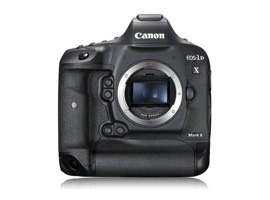
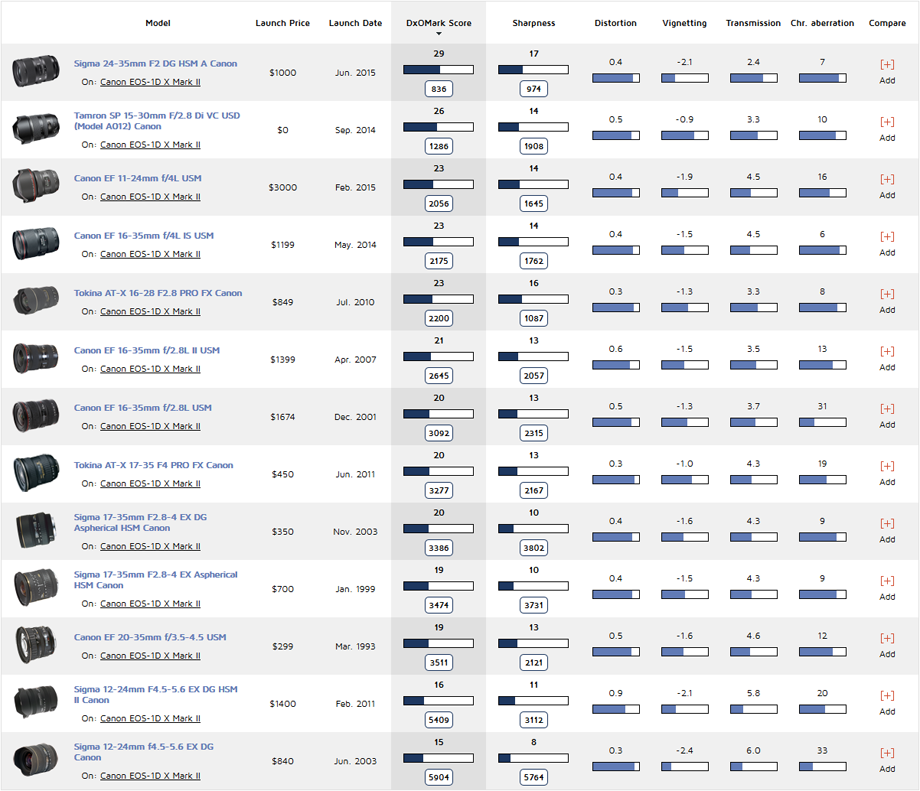
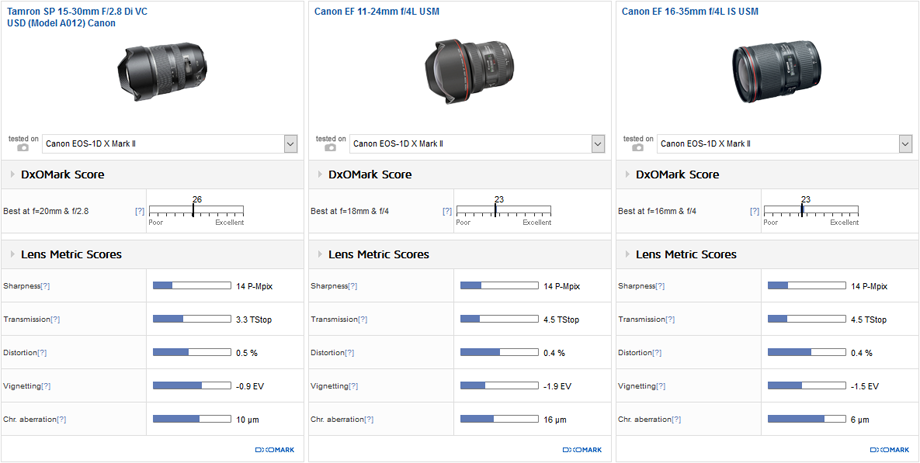
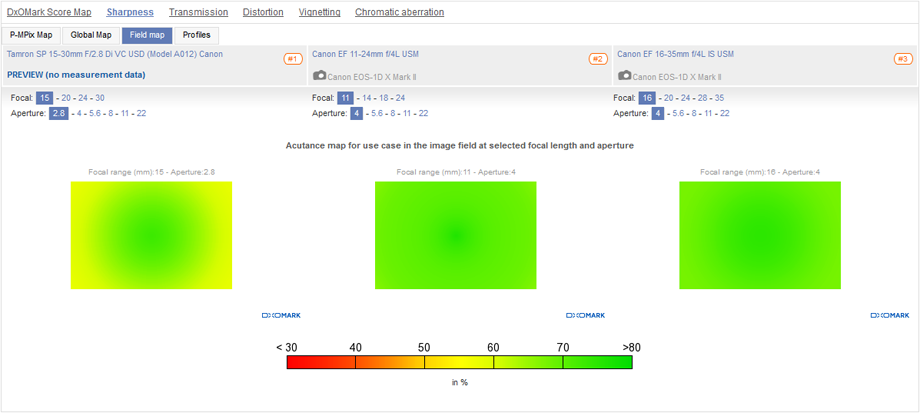
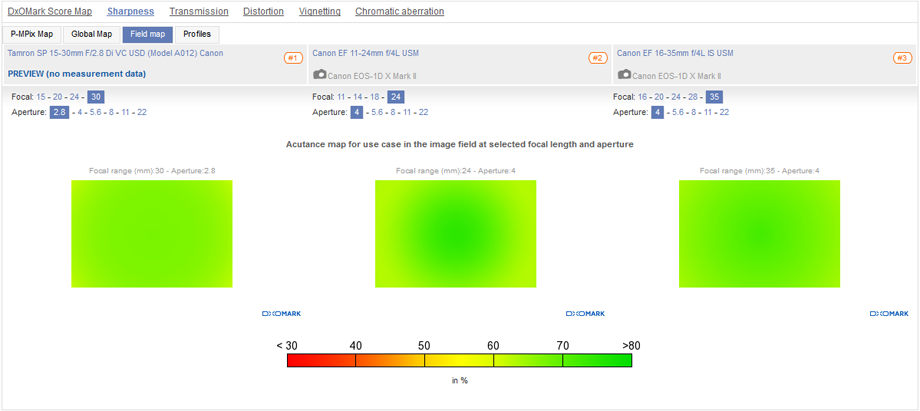
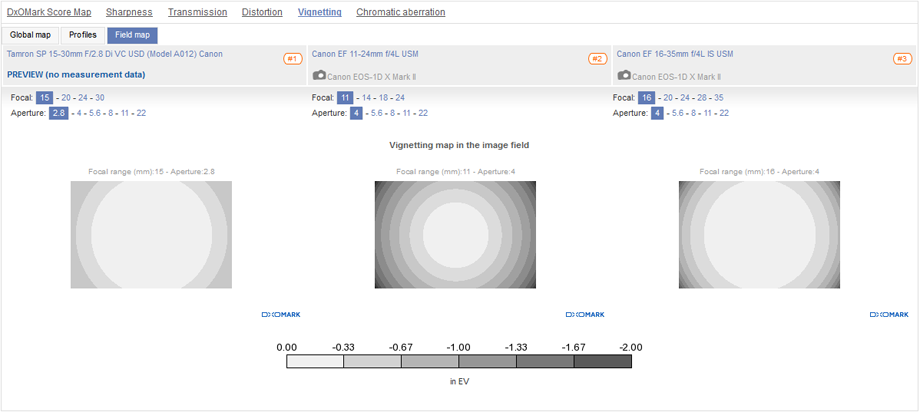
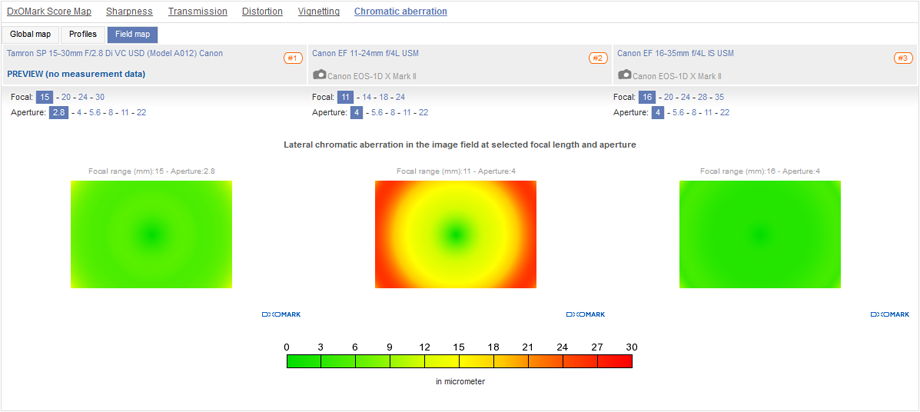
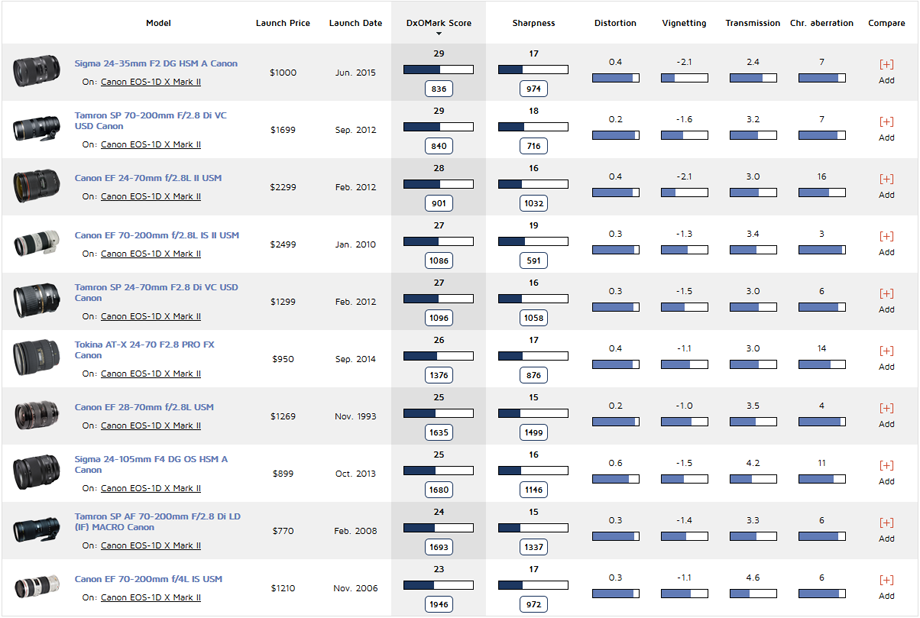
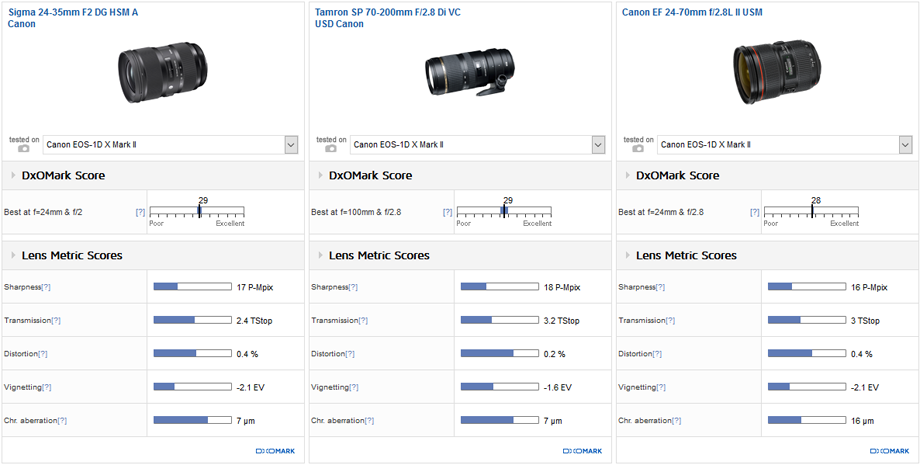

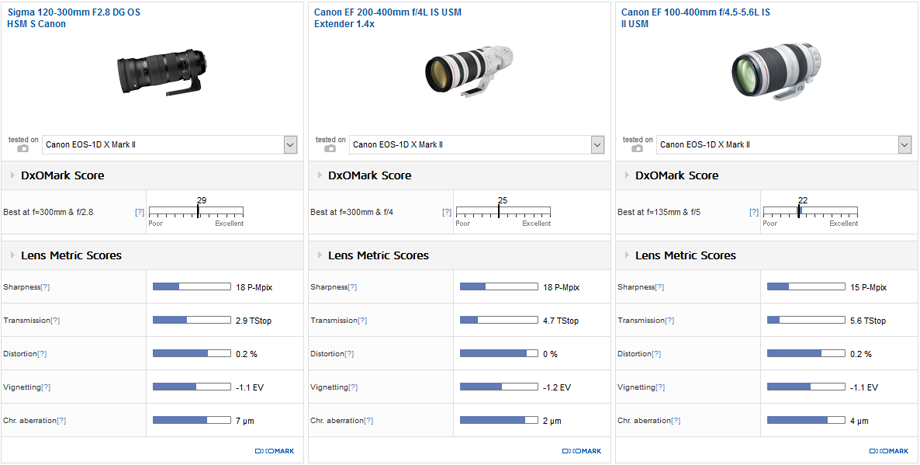
DXOMARK encourages its readers to share comments on the articles. To read or post comments, Disqus cookies are required. Change your Cookies Preferences and read more about our Comment Policy.